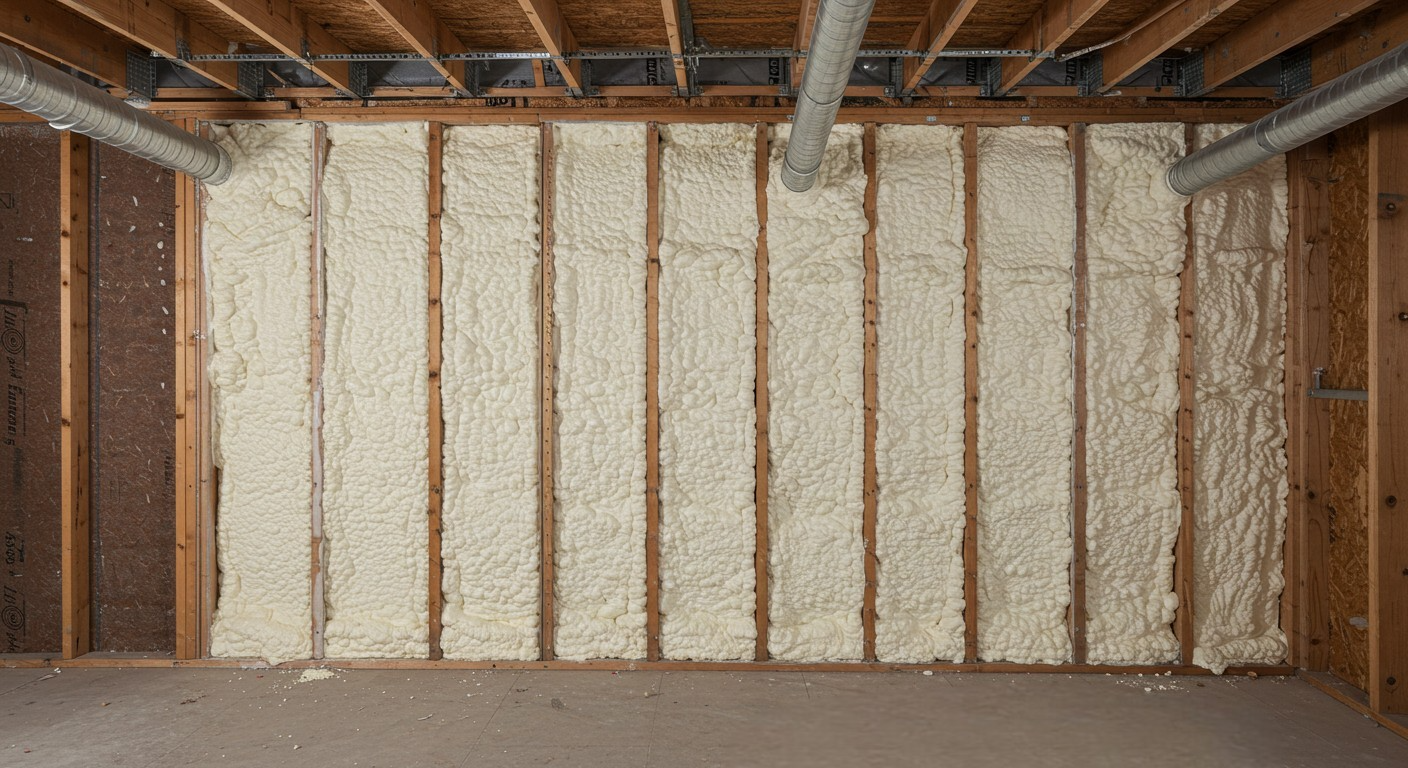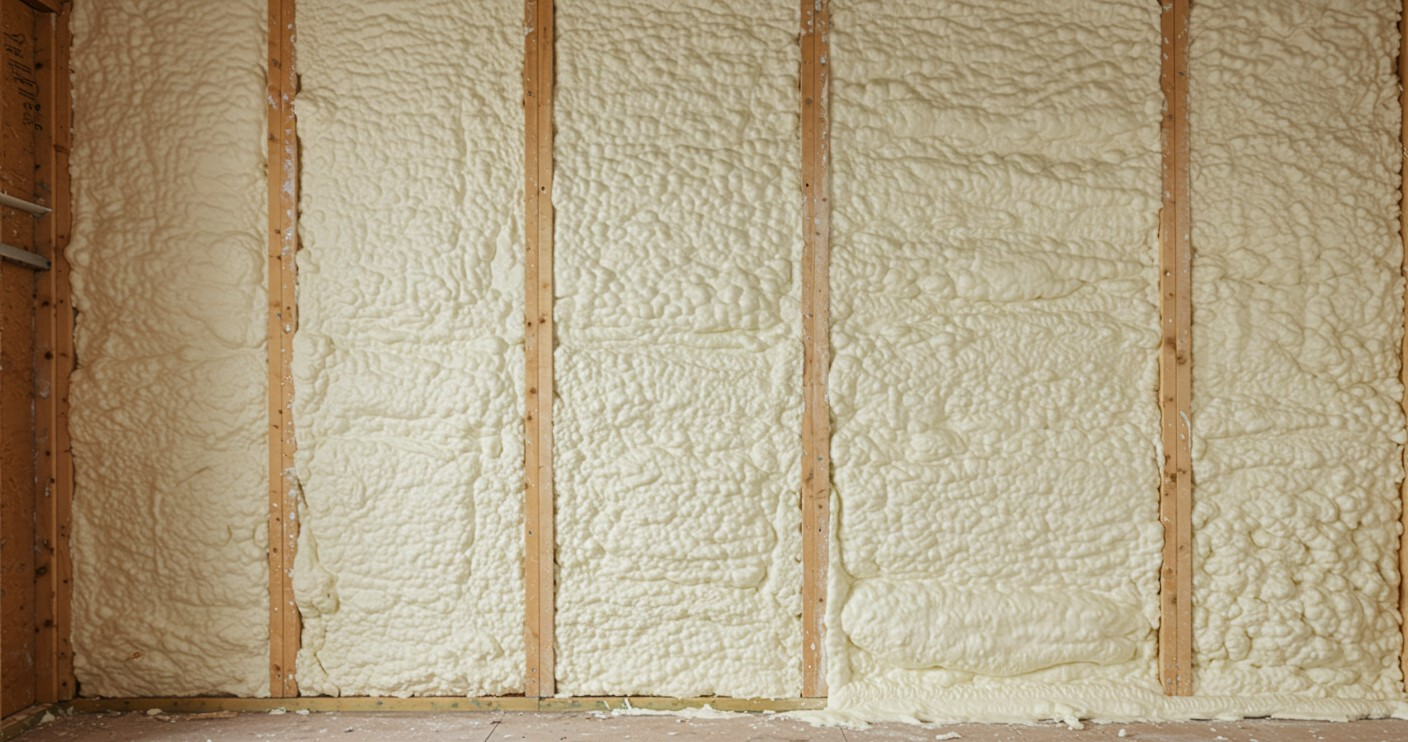
Spray foam insulation blocks air movement and moisture infiltration, two of the main causes of mold development. Its ability to form an air-tight seal directly on contact with surfaces—whether wood, metal, or concrete reduces the chance for humid air to enter walls and ceilings. This stops condensation, which is the starting point for mold.
The foam’s closed-cell structure acts as both insulation and vapor barrier, limiting moisture absorption even in high-humidity environments. These qualities make spray foam a reliable choice for controlling interior air quality and avoiding mold-related structural issues. All data and comparisons presented below reflect field results and practical experience across Texas and similar climates.
D&D Insulation LLC has installed and tested spray foam insulation in residential, commercial, and agricultural buildings for years. The insights provided here are based on direct application results and ongoing maintenance reviews.
| Factor | Effect on Mold Development |
|---|---|
| Air leaks through gaps | Introduces moisture that settles in cavities |
| Porous insulation types | Trap and retain water |
| Fluctuating temperatures | Create condensation in walls and attics |
| Poor ventilation | Promotes stagnant humid air |
Bonus Tip: In East Texas homes without climate zoning, vented attics combined with batt insulation tend to produce higher moisture content in winter and late summer. Use infrared thermography to detect risk zones before replacing or adding insulation.
| Insulation Type | Air Seal | Moisture Barrier | Mold Resistance | R-Value per Inch |
|---|---|---|---|---|
| Open Cell Spray Foam | Moderate | Low | Moderate | ~3.5 |
| Closed Cell Spray Foam | High | High | High | ~6.5 |
| Fiberglass Batt | Low | None | Low | ~3.2 |
| Fiberglass Loose Fill | Low | None | Low | ~2.5 |
Closed cell foam provides the best seal against moisture and mold. Its rigid structure and density reduce water absorption and block vapor transmission. Open cell foam can still absorb water, but it dries out more quickly and prevents air movement.
| Characteristic | Open Cell Foam | Closed Cell Foam |
|---|---|---|
| Water Vapor Permeance | ~10 perms/inch | <1 perm/inch |
| Absorption Rate | Up to 25% by volume | Less than 2% |
| Air Impermeability | Partial | Complete |
| Structural Rigidity | Low | High |
Bonus Tip: In crawlspaces and rim joists, always use closed cell foam to protect wooden framing against seasonal moisture shifts.

In humid zones such as Central and East Texas, consistent high dew points demand a material that stops both vapor and airflow. Closed cell spray foam performs better in these areas than traditional methods. In drier climates like West Texas, open cell can be suitable if combined with proper vapor controls.
U.S. Department of Energy guidelines support the use of closed-cell foam in mixed-humidity climates to reduce condensation and long-term degradation (DOE Building America, 2023).
Closed cell spray foam is more effective because it limits both vapor and liquid penetration.
Yes, but proper removal or integration planning is needed to avoid trapped moisture.
Properly installed foam can last 30+ years with no degradation in moisture control.
It prevents the main causes, but persistent leaks or humidity may still create risk zones if not managed.
D&D Insulation LLC provides moisture-resistant insulation solutions designed to fit building needs in Texas. Contact the team to discuss which spray foam approach fits your home or facility best.
Phone: (903) 389-5705 Email: [email protected]
Closed cell foam usually doesn’t. Open cell foam might, depending on climate and installation zone.
Closed cell is water-resistant, not waterproof. It resists bulk water but isn’t suitable for direct submersion.
By sealing off air leaks and moisture, it reduces mold spores and allergens. Proper curing is necessary.
Foam doesn’t support mold, but dust or organic buildup on its surface might if water is present.
Unvented, conditioned attics work best with spray foam to keep thermal and moisture conditions stable.